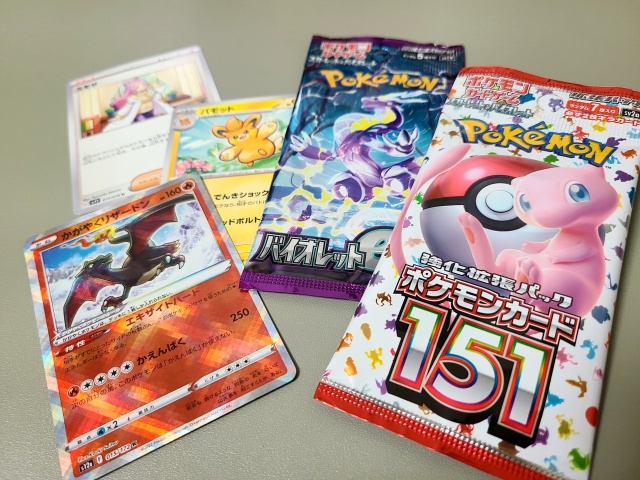
Tips for protecting cards from a new Pokémon collector.
While our Japanese-language reporter Maro has loved Pokémon for a while, it wasn’t until recently that she became hooked on the trading cards. The other day, she bought a few packs just to see what they were all about and was immediately transfixed by the beauty of the current illustrations. She chalks it up to beginner’s luck, but she also managed to score a couple of pretty rare cards right off the bat.
Now, however, she was faced with a dilemma. What’s the best way to protect her cards from scratches, humidity, and even UV rays? Since she was a complete newbie, she visited a few card shops to ask for advice and slowly gathered information about the best practices for preserving them. First, here’s the most foundational of all rules–you should immediately put your cards into individual protective sleeves as soon as you get them. The sleeve is a transparent cover that functions as the most basic layer of protection.
One thing that confused Maro a bit initially is that there are many different kinds of protective sleeves, including inner sleeves, regular sleeves, and top loaders. The kind of sleeves sold at official Pokémon Centers called “deck shields” are representative of the regular sleeve type. At first she thought that buying these would be enough, but that’s not necessarily the case.
For those cards that she really wants to protect, she learned that it’s standard to use at least two kinds of sleeves! Since paper cards are very susceptible to humidity, the trick is to slide on an inner sleeve from the top and a regular sleeve from the bottom. This method offers two layers of protection with less exposure to open air and dust.
Maro immediately tried covering a few cards using this method and was amazed by just how much more protected they seemed. Even using just one sleeve was a great way to protect the card’s surface and edges from scratches. She recommends just making a habit of immediately encasing any new favorite cards in sleeves like this.
▼ From bottom to top: a card as is, a card in only an inner sleeve, and a card doubled up in an inner sleeve and a regular sleeve
For those who play the Pokémon trading card game competitively, this double-layered sleeve approach may be the perfect middle-ground solution to keep them light and easily transportable. However, for those who want to preserve their cards to the utmost of their ability for display purposes, she recommends taking things a step further.
To do this, you must insert your cards into some kind of UV ray-blocking top loader card sleeve. A top loader (commonly known as a “card loader” in Japanese) is essentially the ultimate protective sleeve made of a thicker, harder material. For this step, Maro ordered some top loaders from Kawashima Factory, an Osaka-based brand that specializes in plastic product production. You can buy a three-pack from Kawashima Factory on Amazon Japan for 490 yen (US$3.45). The great thing about this brand is that they fit Pokémon cards that are already encased in the official sleeves. They’re also very thin, allowing for maximum storage potential.
Maro wanted to try using both of these approaches to create the ultimate protective combination, so she readied one of her favorite cards, the Water-type Lumineon. Actually, she wanted to do something even more special for this one so that she could keep it on continuous display.
To that end, she purchased some special magnet top loaders with stands called “card armor” by Japanese maker Sunista. They come in a pack of four on Amazon Japan for 1,990 yen. They’re UV ray-blocking, have a high degree of transparency, are long-lasting, and just look, well, stylish.
She loaded her Lumineon card into the magnet top loader, set it on the stand, and voila! It looked like something you’d see at a museum. The sleek design of the top loader coupled with the gorgeous illustration of the card seemed to elevate it to another level.
On top of everything else, perhaps the best thing about this particular top loader was that it was extremely easy to open and close and she could also adjust the angle of the stand depending on where she wanted to display it. It would be hard to resist swapping out cards on a daily basis when things were this easy. Although the price tag came out to be just under 500 yen per top loader and stand, this level of quality was definitely worth it for those ultra special cards in her collection.
Maro would like to share a couple of other tips in closing. Please note that while Pokémon Centers sell adorable limited-edition display frames, they’re not UV ray-blocking, so you’ll want to insert your cards into a UV-protective sleeve first.
You can also buy simple but cute display frames at Japanese 100-yen stores.
Readers who want to try Maro’s methods out for themselves can purchase the UV ray-blocking top loaders on Kawashima Factory’s Amazon Japan page and the magnet card armor top loaders with stands on Sunista’s Amazon Japan page.
Maro admits that she’s surprised at how quickly she went from square one to knowing this much about proper trading care care in such a short span of time. She knows that the pros have even better strategies up their sleeves [pun intended], but for now she’s very content with her approach for her own beginning collector purposes.
If you’re just reading Maro’s preemptive tips for protecting your trading cards now but already have a bunch of warped cards, never fear because we’ve also got some handy tips for fixing them quickly and easily.
All images © SoraNews24
[ Read in Japanese ]


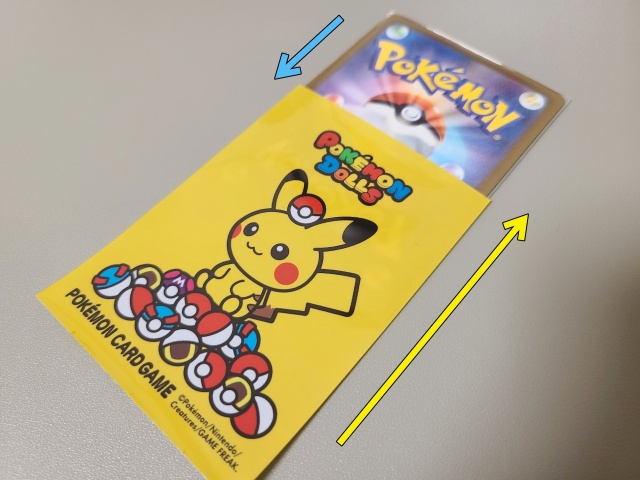
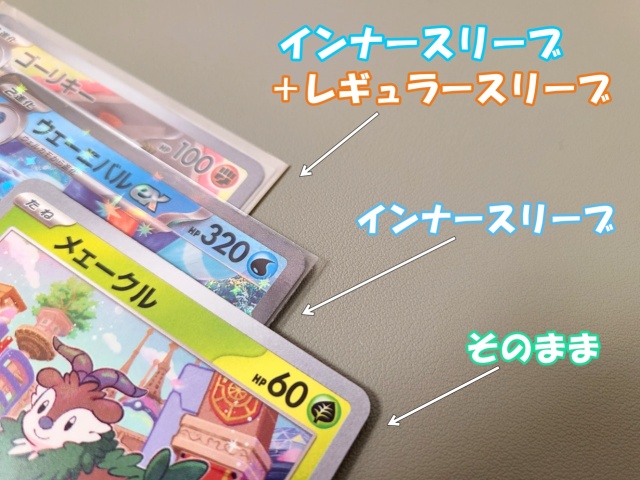
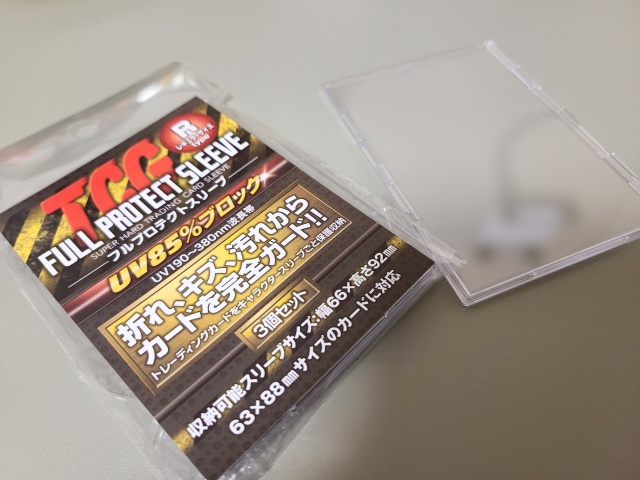
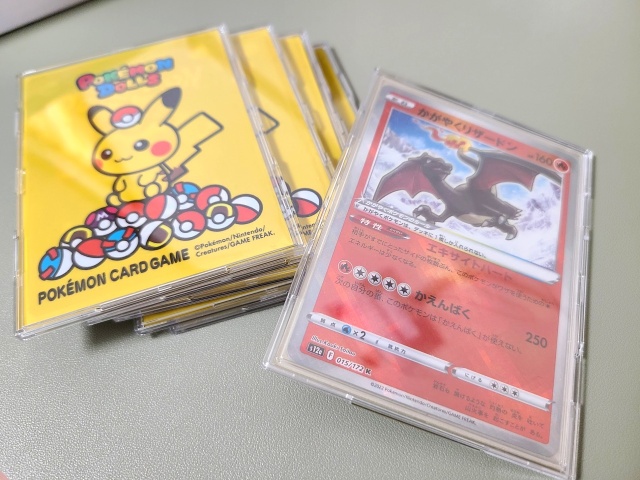
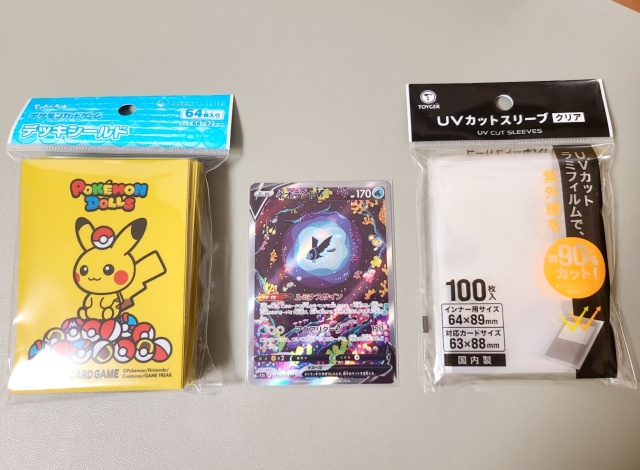
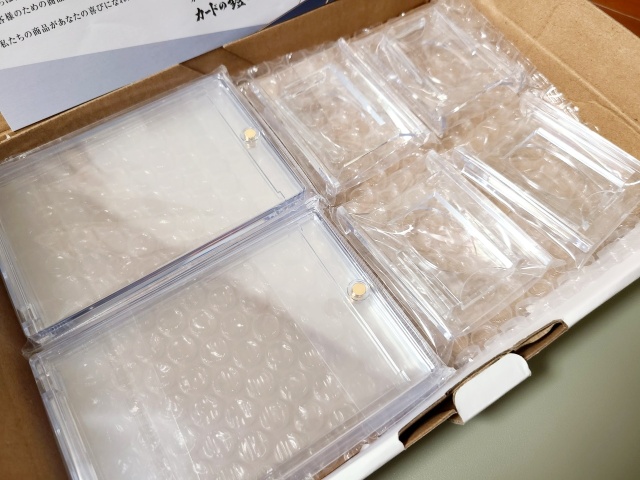
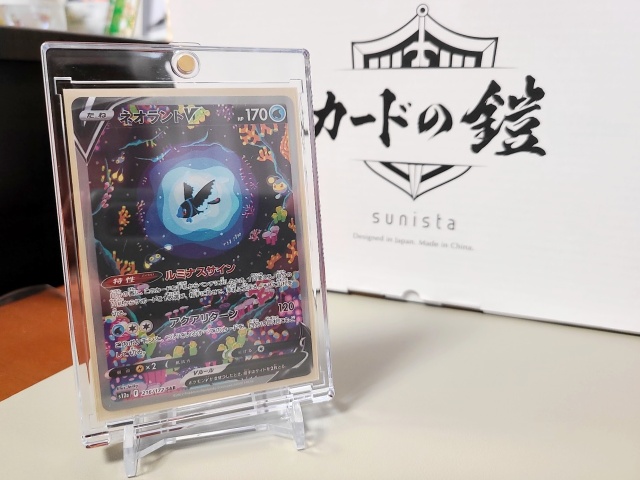
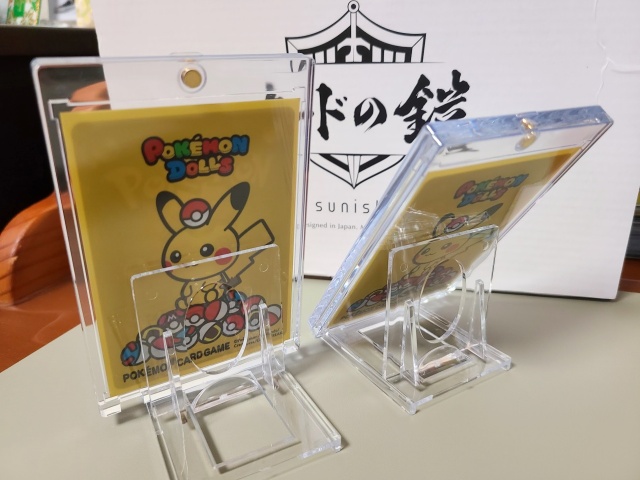
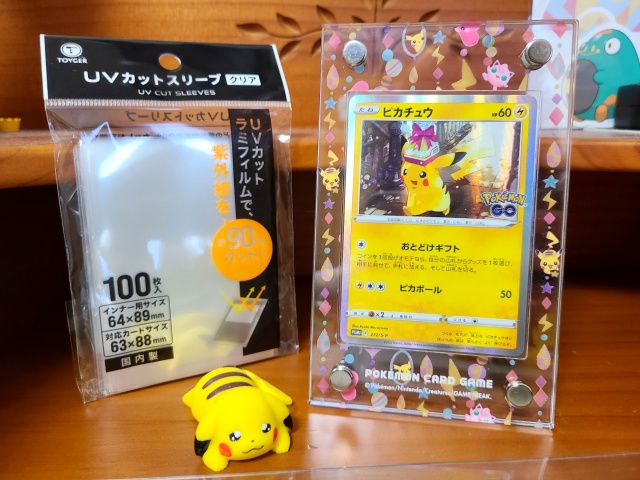
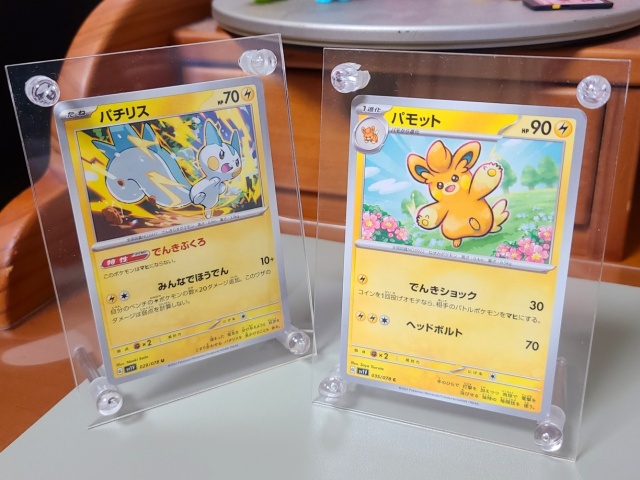
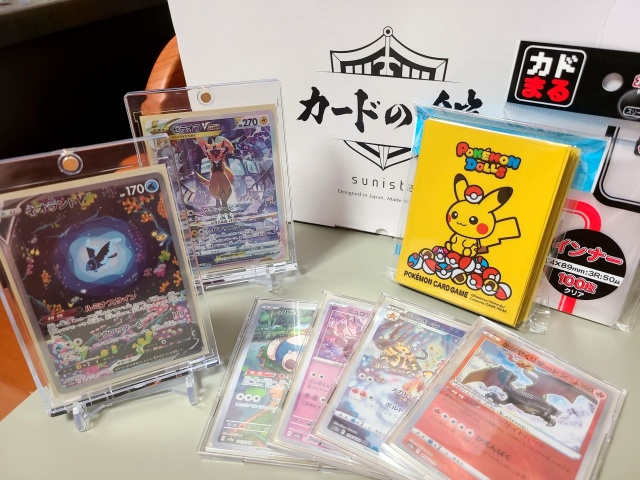
 New sushi train toy makes sushi for you, then delivers it, and is exactly what we want【Video】
New sushi train toy makes sushi for you, then delivers it, and is exactly what we want【Video】 Japanese police face criticism for improper handling of stolen Pokémon and Yu-Gi-Oh cards【Video】
Japanese police face criticism for improper handling of stolen Pokémon and Yu-Gi-Oh cards【Video】 Real-life heart of the cards? Amazing Yu-Gi-Oh! hand floats up to man in Japanese river【Pics】
Real-life heart of the cards? Amazing Yu-Gi-Oh! hand floats up to man in Japanese river【Pics】 Pikachu, other Pokémon recreate classic painting The Scream, have us squealing at their cuteness
Pikachu, other Pokémon recreate classic painting The Scream, have us squealing at their cuteness How much will three packs of Pokémon cards bought overseas fetch in Japan?
How much will three packs of Pokémon cards bought overseas fetch in Japan? Japanese city loses residents’ personal data, which was on paper being transported on a windy day
Japanese city loses residents’ personal data, which was on paper being transported on a windy day Foreigner’s request for help in Tokyo makes us sad for the state of society
Foreigner’s request for help in Tokyo makes us sad for the state of society Should you add tartar sauce to Japanese curry rice? CoCo Ichi makes diners an unusual offer
Should you add tartar sauce to Japanese curry rice? CoCo Ichi makes diners an unusual offer Seaside scenery, history, and so many desserts on Yokohama’s Akai Kutsu【Japan Loop Buses】
Seaside scenery, history, and so many desserts on Yokohama’s Akai Kutsu【Japan Loop Buses】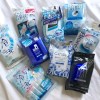 Japan’s cooling body wipe sheets want to help you beat the heat, but which work and which don’t?
Japan’s cooling body wipe sheets want to help you beat the heat, but which work and which don’t? Smash Bros. director Sakurai stabs Kirby in the face, has delicious justification for it
Smash Bros. director Sakurai stabs Kirby in the face, has delicious justification for it Tokyo capsule hotel’s low month-long rates are an awesome way to sample life in Japan’s capital
Tokyo capsule hotel’s low month-long rates are an awesome way to sample life in Japan’s capital With an Evangelion watch on your wrist, “all is right with the world.”
With an Evangelion watch on your wrist, “all is right with the world.” Akiba Dental Clinic: The Akihabara dentist where a moe maid in cosplay cleans your teeth
Akiba Dental Clinic: The Akihabara dentist where a moe maid in cosplay cleans your teeth A Gintama fan’s emotional 19-year journey to buy a proper Lake Toya bokuto wooden katana【Pics】
A Gintama fan’s emotional 19-year journey to buy a proper Lake Toya bokuto wooden katana【Pics】 McDonald’s new Happy Meals offer up cute and practical Sanrio lifestyle goods
McDonald’s new Happy Meals offer up cute and practical Sanrio lifestyle goods Japanese ramen restaurants under pressure from new yen banknotes
Japanese ramen restaurants under pressure from new yen banknotes French Fries Bread in Tokyo’s Shibuya becomes a hit on social media
French Fries Bread in Tokyo’s Shibuya becomes a hit on social media Studio Ghibli releases new action figures featuring Nausicaä of the Valley of the Wind characters
Studio Ghibli releases new action figures featuring Nausicaä of the Valley of the Wind characters New private rooms on Tokaido Shinkansen change the way we travel from Tokyo to Kyoto
New private rooms on Tokaido Shinkansen change the way we travel from Tokyo to Kyoto Red light district sushi restaurant in Tokyo shows us just how wrong we were about it
Red light district sushi restaurant in Tokyo shows us just how wrong we were about it Tokyo Tsukiji fish market site to be redeveloped with 50,000-seat stadium, hotel, shopping center
Tokyo Tsukiji fish market site to be redeveloped with 50,000-seat stadium, hotel, shopping center All-you-can-drink Starbucks and amazing views part of Tokyo’s new 170 meter-high sky lounge
All-you-can-drink Starbucks and amazing views part of Tokyo’s new 170 meter-high sky lounge Beautiful Ghibli sealing wax kits let you create accessories and elegant letter decorations【Pics】
Beautiful Ghibli sealing wax kits let you create accessories and elegant letter decorations【Pics】 Studio Ghibli releases Kiki’s Delivery Service chocolate cake pouches in Japan
Studio Ghibli releases Kiki’s Delivery Service chocolate cake pouches in Japan New definition of “Japanese whiskey” goes into effect to prevent fakes from fooling overseas buyers
New definition of “Japanese whiskey” goes into effect to prevent fakes from fooling overseas buyers Our Japanese reporter visits Costco in the U.S., finds super American and very Japanese things
Our Japanese reporter visits Costco in the U.S., finds super American and very Japanese things Studio Ghibli unveils Mother’s Day gift set that captures the love in My Neighbour Totoro
Studio Ghibli unveils Mother’s Day gift set that captures the love in My Neighbour Totoro More foreign tourists than ever before in history visited Japan last month
More foreign tourists than ever before in history visited Japan last month New Pokémon cakes let you eat your way through Pikachu and all the Eevee evolutions
New Pokémon cakes let you eat your way through Pikachu and all the Eevee evolutions Sales of Japan’s most convenient train ticket/shopping payment cards suspended indefinitely
Sales of Japan’s most convenient train ticket/shopping payment cards suspended indefinitely Sold-out Studio Ghibli desktop humidifiers are back so Totoro can help you through the dry season
Sold-out Studio Ghibli desktop humidifiers are back so Totoro can help you through the dry season Japanese government to make first change to romanization spelling rules since the 1950s
Japanese government to make first change to romanization spelling rules since the 1950s Ghibli founders Toshio Suzuki and Hayao Miyazaki contribute to Japanese whisky Totoro label design
Ghibli founders Toshio Suzuki and Hayao Miyazaki contribute to Japanese whisky Totoro label design Doraemon found buried at sea as scene from 1993 anime becomes real life【Photos】
Doraemon found buried at sea as scene from 1993 anime becomes real life【Photos】 Tokyo’s most famous Starbucks is closed
Tokyo’s most famous Starbucks is closed One Piece characters’ nationalities revealed, but fans have mixed opinions
One Piece characters’ nationalities revealed, but fans have mixed opinions We asked a Uniqlo employee what four things we should buy and their suggestions didn’t disappoint
We asked a Uniqlo employee what four things we should buy and their suggestions didn’t disappoint Princesses, fruits, and blacksmiths: Study reveals the 30 most unusual family names in Japan
Princesses, fruits, and blacksmiths: Study reveals the 30 most unusual family names in Japan New Pokémon card game lounge opening in downtown Tokyo with free drinks, snacks, and loaner decks
New Pokémon card game lounge opening in downtown Tokyo with free drinks, snacks, and loaner decks Amazing graduation project card game made by Kyoto University art student is simply incredible
Amazing graduation project card game made by Kyoto University art student is simply incredible Pikachu Van Gogh Pokémon card pulled from museum promotion for “safety and security” reasons
Pikachu Van Gogh Pokémon card pulled from museum promotion for “safety and security” reasons The Fuwatoro Yamaimo Teppan just might be 7-Eleven Japan’s dish of the year【Taste test】
The Fuwatoro Yamaimo Teppan just might be 7-Eleven Japan’s dish of the year【Taste test】 Why was Kanta’s Granny picked to be on the Joker card of this My Neighbor Totoro deck?
Why was Kanta’s Granny picked to be on the Joker card of this My Neighbor Totoro deck? Anime about nasty contract surprises gets real-life credit card with nasty contract surprises
Anime about nasty contract surprises gets real-life credit card with nasty contract surprises Otaku crime: Kyoto police arrest man for selling counterfeit ultra-rare Yu-Gi-Oh! card
Otaku crime: Kyoto police arrest man for selling counterfeit ultra-rare Yu-Gi-Oh! card Uno Mario Kart is ready to take the action from the track to the cards with cool crossover rule
Uno Mario Kart is ready to take the action from the track to the cards with cool crossover rule Humongous Charizard card, created with help from Pokémon fans, appears in Yokohama
Humongous Charizard card, created with help from Pokémon fans, appears in Yokohama Heroic Japanese convenience store owner saves foreigner from online scam artist
Heroic Japanese convenience store owner saves foreigner from online scam artist Cats in Japan can now get digital resident cards in Kanagawa Prefecture
Cats in Japan can now get digital resident cards in Kanagawa Prefecture Garigari-kun popsicle teams up with new Pokémon film for a refreshing summertime treat
Garigari-kun popsicle teams up with new Pokémon film for a refreshing summertime treat Japanese Twitter user spots moms showing fighting spirit during kids’ Pokémon card battle in park
Japanese Twitter user spots moms showing fighting spirit during kids’ Pokémon card battle in park Chinese criminal’s Yu-Gi-Oh card reaches astronomical price before auction is shut down
Chinese criminal’s Yu-Gi-Oh card reaches astronomical price before auction is shut down Pokémon Company’s job listing hints at a new Pokémon game coming to smartphones
Pokémon Company’s job listing hints at a new Pokémon game coming to smartphones
Leave a Reply